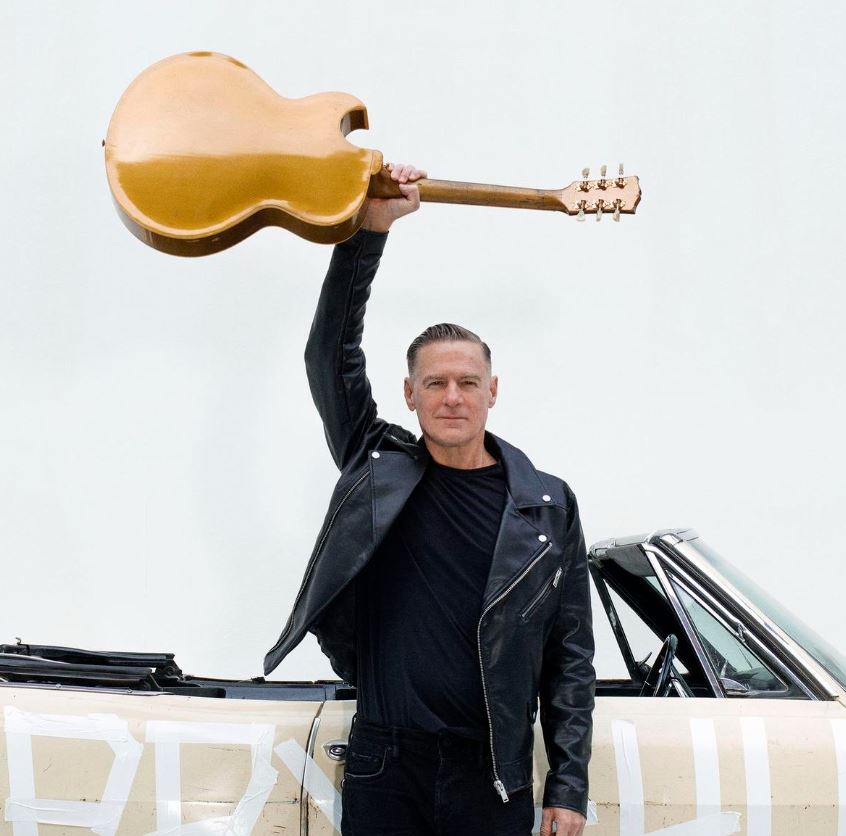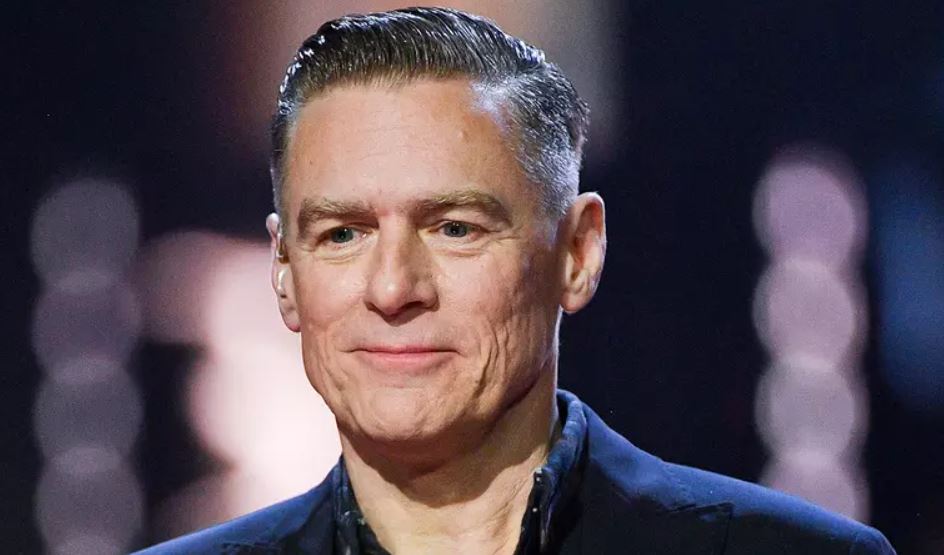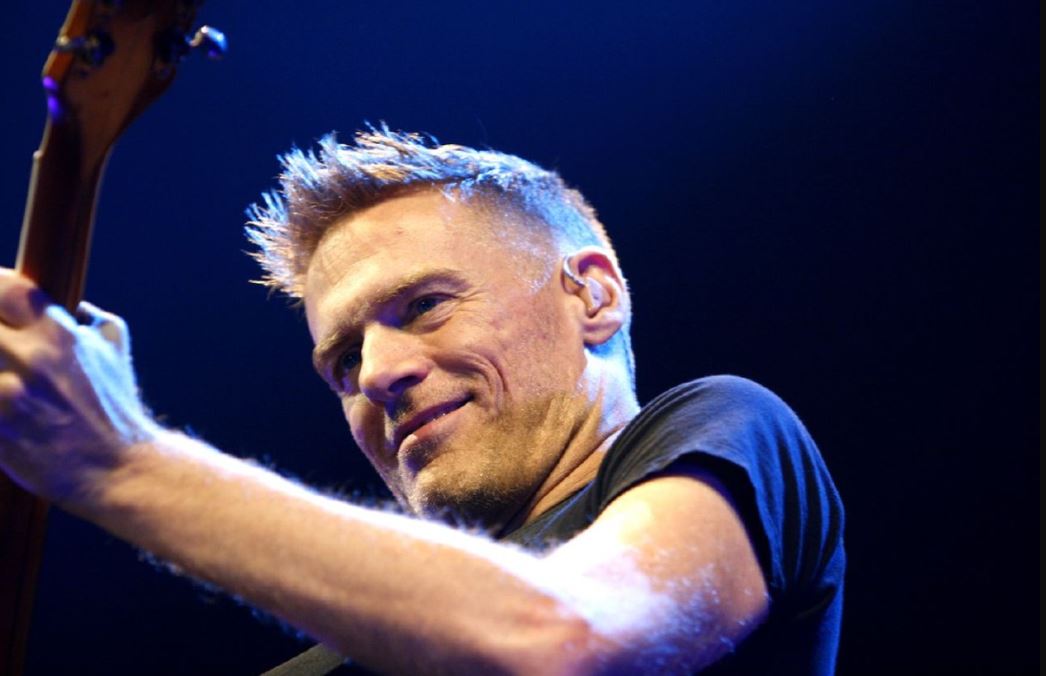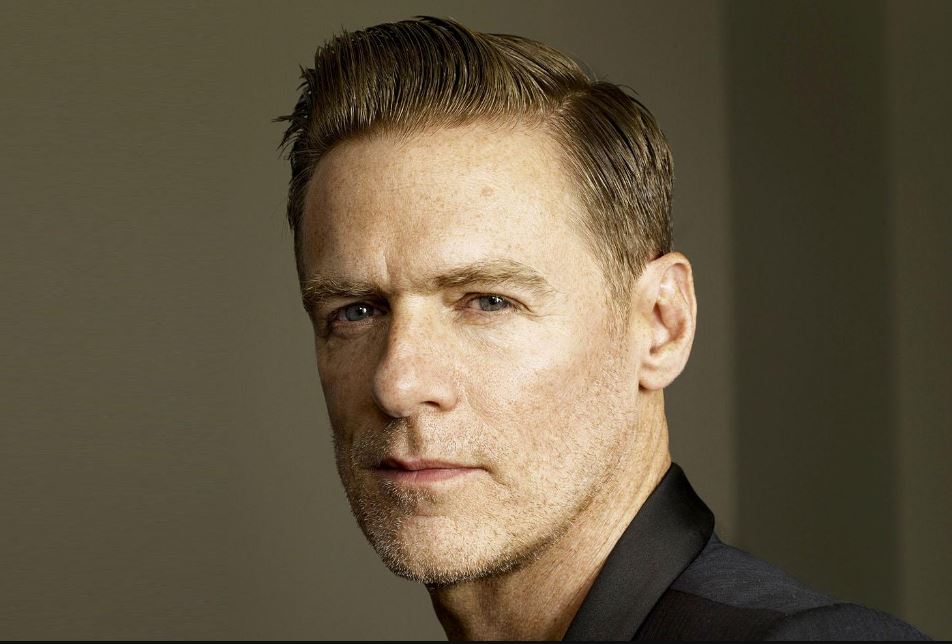
Bryan Adams : 9 Ways to Contact Them (Phone Number, Email, House address, Social media profiles)
Bryan Adams : Ways to Contact or Text Bryan Adams (Phone Number, Email, Fanmail address, Social profiles) in 2023- Are you looking for Bryan Adams 2023 Contact details like his Phone number, Email Id, WhatsApp number, or Social media account information that you have reached on the perfect page.
We are attempting to answer many of the most frequently asked questions by Bryan Adams fans, and a large percentage of them are related to contact information. There is a lot of information about Bryan Adams ‘s Fan Mail Address, Autograph Request Address, Phone Number, Email Address, and more details that you can learn about in the following sections of this article.
Bryan Adams Biography and Career:
Also Checkout: How to Contact Calum Hood: Phone Number, Email Address, Fan Mail Address, and Autograph Request Address
Bryan Adams, a Canadian singer, songwriter, photographer, and social activist, was born on November 5, 1959, in Kingston, Ontario. In the 1980s, he released two albums, Cuts Like a Knife (1983) and Reckless (1985), which helped make him one of the most popular and successful recording artists of the decade (1984). Adams was already a talented musician at an early age, and he taught himself how to play the guitar all by himself.
His father’s career in the Canadian army and as an observer for the United Nations required the family to move quite a few times during his lifetime. When his parents split, he went to live with his mother in the region of British Columbia which is located north of Vancouver. At the age of sixteen, the lead vocalist of the Canadian glam-rock band Sweeney Todd decided to forgo his senior year of high school to concentrate on a music career.

He worked in a recording studio and played live while he was on the road, playing, and creating songs for Sweeney Todd’s album “if wishes were horses” (1977). Adams was familiar with Jim Vallance, a Canadian musician, composer, and producer, not long after the recording was made available to the public. Nonetheless, Vallance believed that Adams need extra voice tuition to fulfill his potential.
Under Vallance’s direction, Adams rapidly developed a strong and unique sound that, depending on your perspective, might be likened to artists such as Rod Stewart, Paul Rodgers, and Steve Marriott. With the release of Adams’ self-titled first album in 1980, the musician went on a tour throughout Canada that lasted for four months. He did not tour the United States for six months with the band You Want It, You Got It until the year 1981. His third album, released in 1983 and titled Cuts Like a Knife, debuted in the top ten of the Billboard Hot 100 list.
He gained a household name almost immediately with the release of singles such as “Straight from the Heart,” “Cuts Like a Knife,” and “This Time.” Adams was one of the opening acts for a tour that Journey had in the United States in 1983, while Journey was one of the headlining acts. In 1984, he released Reckless, which is considered to be his most commercially successful album. The production of the musical, which was based on the movie from 1990, started in March 2018 in Chicago, then moved to Broadway in the autumn of that same year, and will play in London’s West End in 2020.
He was honored with a Grammy Award, an MTV Video Music Award, and an American Music Award for his song “(Everything I Do) I Do It for You.” This song was included in the soundtracks of more than one hundred movies and television shows (1991). In addition to his career as a photographer, he was also well-known in fashion design and automobile modeling.
In 2013, the book Wounded, a collaboration with the author Caroline Froggatt, was launched, and in 2016, the collection of abstract photos named Untitled was made available. As a result of Adams’ significant contributions to Canadian society, he was awarded the Companion of the Order of Canada and the Companion of the Order of British Columbia. The production of musical notes with one’s voice is what we refer to as singing.
When it comes down to the mechanics of singing, the lungs, larynx, larynxes, and lungs, the chest and head cavities, which act as an amplifier, and the tongue and palate, teeth, and lips articulate and impose consonants and vowels are all essential components of a well-defined technique that relies heavily on the use of these components. Singing is a technique that relies heavily on using these components because it relies on the use of these components. Although each of these four processes may do its function without the assistance of the others, they come together to create a vocal style and are intended to affect one another.
When a person sings, the vibration of their vocal cords is caused in a certain manner by using their breath. To sing louder, higher, or for a longer period requires more air. Stricter control over the exhalation of the breath is required as a result of this as well. It is helpful to use a reed instrument as a comparison, such as a clarinet, oboe, or saxophone, because of the significance that breath plays in the performance of these instruments.
Singing is an art form that requires the coordination of several different anatomical systems to generate a steady stream of sound. Another distinction between singing and speaking is the need for a greater level of control over the movement and reflexes of the larynx during singing. It is difficult to sing at higher pitches because, at some point, the larynx will rise sympathetically, which will cause the voice to break or crack. This will make it more challenging to sing. Singing may be defined as occurring at a pitch that is an octave and a third higher or lower than the larynx’s natural pitch range.
As soon as someone reaches a point either above or below that limit, it is possible to differentiate between untrained amateurs and professionals based on their technical ability. What differentiates Western singing from other genres is the greater emphasis on loudness. It’s conceivable that singers from other cultures have had a wider range, particularly higher up, but it’s improbable that they’ve sung louder than people from ours have.
The distinctive characteristics of Western singing include a focus on pure sound, tone quality (also known as timbre), and color (what is considered to be the natural beauty of the singer’s own voice). It is more common in Western music than in any other kind of music for singers and listeners to forget the song’s linguistic roots and conceive of singing as a form of musical expression that is simply produced by the voice.

The fundamental inspiration for contemporary singing styles in the West may be traced back to the Italian bel canto, which was associated with polyphonic music of the 16th century. To do the text credit, the singers, who in these polyphonic pieces took on the role of a vocal symphony, needed to be able to represent a diverse range of feelings. As a direct consequence of this, the craft of singing has progressed to the point where it enables vocalists to express themselves with the most significant force and diversity possible.
The concept that the strength of a singer’s tone may be adjusted from note to note was the foundation of the bel canto singing style, popular throughout the latter part of the 16th century and the early part of the 17th century. Changes in volume level such as this were called messa di voce. Nevertheless, changes in the intensity of the vocal tone should not be confused with variations in the loudness of the vocal tone.
Rather than increasing the volume of the oral chamber, as would be the case with an increase in total volume, the intensity technique was used to alter tone by either increasing or reducing the air pressure placed on the glottal lips. This was done to produce a higher or lower pitch. The voice generates a tone known as a diapason when the larynx is in a lower position, but a flute tone is produced when the larynx is in a higher position. This was another significant factor that contributed to the development of the musical style.
These differences, on the other hand, were primarily eliminated by composers who followed in Richard Wagner’s footsteps and produced a more diversified style of singing. Singing in the bel canto style involved adopting a posture in which the chest was thrust forward while the abdomen was brought in. Moreover, the soft palate needed to be lifted while the larynx needed to be dropped in response, and the singer needed to pull their chin back to open up their neck. All of these facets of the method’s physical makeup are included below. The Italians held the belief that everyone who could sing could do so after they had mastered the art of breathing properly, and they even stated this publicly.
One may exercise control over the diaphragm by engaging the upper abdominal muscles, which are responsible for maintaining a consistent air pressure flow from the lungs. The lungs were thought to be accountable for tone emission, the glottis was thought to be responsible for pitching, the oral cavity was thought to be liable for vowels and timbres, and the front of the mouth was thought to be responsible for consonants. Manuel Garcia was a proponent of this singing theory from the 18th century. One analogy that comes to mind for the larynx is that of the nozzle of a water sprayer; it regulates air flow. The diaphragm serves as a regulator for airflow.
It is possible to create accented notes in singing in the same manner that an accented note may be accomplished by a violinist by the exact positioning of the bow when the muscles and reserve of air are appropriately regulated. Violators are able to engage in a practice known as vibrazione, which allows them to regulate their voice at the larynx and boost the loudness of their voice just by squeezing their larynx.
In later singing schools, much attention was devoted to the “mask,” which refers to the cavities in the skull in which the voice echoed. This was the case even though the resonation did not affect the radiative power of the voice, but rather just its loudness. Vocalists such as these and the subsequent parlando singers, who performed like bel canto performers by combining the two art forms, made deliberate use of resonation. While bel canto performers had more control over the physical mechanisms of their instruments, parlando singers performed like bel canto performers by combining the two art forms.
The production of musical notes with one’s voice is what we refer to as singing. When it comes down to the mechanics of singing, the lungs, larynx, larynxes and lungs, the chest and head cavities, which act as an amplifier, and the tongue and palate, teeth, and lips articulate and impose consonants and vowels are all essential components of a well-defined technique that relies heavily on the use of these components. Singing is a technique that relies heavily on using these components because it depends on the use of these components.
Even though each of these four processes may do its function without the assistance of the others, they come together to create a vocal style and are intended to affect one another. When a person sings, the vibration of their vocal cords is caused in a certain manner by the usage of their breath. To sing louder, higher, or for a longer period requires more air. Stricter control over the exhalation of the breath is required as a result of this as well. It is helpful to use a reed instrument as a comparison, such as a clarinet, oboe, or saxophone, because of the significance that breath plays in the performance of these instruments.
Singing is an art form that requires the coordination of many different anatomical systems to generate a steady stream of sound. Another distinction between singing and speaking is the need for a greater level of control over the movement and reflexes of the larynx during singing. It is difficult to sing at higher pitches because, at some point, the larynx will rise sympathetically, which will cause the voice to break or crack. This will make it more challenging to sing. Singing may be defined as occurring at a pitch that is an octave and a third higher or lower than the larynx’s natural pitch range. As soon as someone reaches a point either above or below that limit, it is possible to differentiate between untrained amateurs and professionals based on their technical ability.
Hector Berlioz, Giuseppe Verdi, and Wagner’s development of the orchestra in the 19th century encouraged singers to explore new techniques to strengthen their voices, which ultimately led to the formation of a unique style known as “singing on resonance.” Jean de Reszke was the most influential proponent of this school, and he emphasized the importance that the nose plays in resonation. It was considered that the hard palate, the teeth, and the face mask and the nose might also function as resonators.
Romantic opera composers’ demands on the human voice altered the basic building blocks of the form. This was largely due to the vast orchestral resources that these composers relied upon to construct their works. When it comes to Wagnerian music dramas in particular, the sheer weight of orchestral sound necessitated an unprecedented level of vocal endurance from the soloist. Verdi did not depend on the presumptions that the orchestra would make; rather, he relied on the emotional intensity of his speech to beg for louder and more powerful singing.
Even in the operas that were kept from the earlier repertory, florid songs remained to be performed, despite their performance becoming more standardised and the purview of professionals. In the year 1830, it was expected of all singers that they would be masters of the bel canto techniques. These days, however, vocalists are categorized as dramatic, lyric, coloratura, etc. In addition to this, the conventional range classifications of a soprano, alto, tenor, and bass-baritone were expanded to include the mezzo-soprano, baritone, and bass-baritone.

Autograph Request Address of Bryan Adams
Requesting a signature from Bryan Adams is becoming one of the most popular choices for fans who are hectic and locked in their daily normal routines. If you want Bryan Adams ‘s signature, you may write him an autograph request letter and mail it to his office address.
Autograph Request Address:
If you anticipate a speedy answer, include a self-addressed, sealed envelope. Include a photo of Bryan Adams in your autograph request letter if you want a signature on his photo. A response from a celebrity’s office usually takes a couple of weeks, so be patient.
Bryan Adams Profile-
- Full Name– Bryan Adams
- Birth Sign- Scorpio
- Date of Birth– 5 November 1959
- State and Country of Birth– Kingston, Canada
- Age -63 years (As 0f 2023)
- Parents– Father: Conrad J. Adams, Mother: Elizabeth Jane Adams
- Cousins– NA
- Height– 1.72 m
- Occupation– Musician
Bryan Adams Phone Number, Email, Contact Information, House Address, and Social Profiles:

Ways to Contact Bryan Adams :
1. Facebook Page: https://www.facebook.com/bryanadamsofficial
Bryan Adams has a Facebook account where he publishes his pictures and videos. The above-mentioned URL will take you to his profile. It has been verified, and we can certify that it is a 100% accurate profile of Bryan Adams . You may contact him on Fb, which you can find by clicking the link here.
2. YouTube Channel: https://www.youtube.com/channel/UCxuYPUdTZHRZKVRZ1km1plw
Bryan Adams has his own channel on youtube, where he uploaded his videos for his followers to watch. He has also earned a million subscribers and thousands of views. Anyone interested in seeing his uploads and videos may utilize the account URL provided above.
3. Instagram Profile: https://www.instagram.com/bryanadams/
Bryan Adams even has an Instagram account, in which he has over a thousand followers and gets over 100k likes per posting. If you would like to view his most recent Instagram pics, click on the link above.
4. Twitter: https://twitter.com/bryanadams
As of yet, Bryan Adams has gained a large number of followers on his Twitter account. Click on the link above if you’re willing to tweet it. The link above is the only way to get in touch with him on Twitter.
5. Phone number: (604) 688-7274
Bryan Adams ‘s many phone numbers have been released on Google and the internet, but none of them truly function. However, we’ll let you know as soon as we’ve located an exact number.
6. Fan Mail Address:
Bryan Adams
Bruce Allen Talent
425 Carrall Street
Suite 520
Vancouver, BC V6B 6E3
Canada
7. Email id: info@bruceallen.com
8. Website URL: NA
Also Checkout: How to Contact Calum Hood: Phone Number, Email Address, Fan Mail Address, and Autograph Request Address


